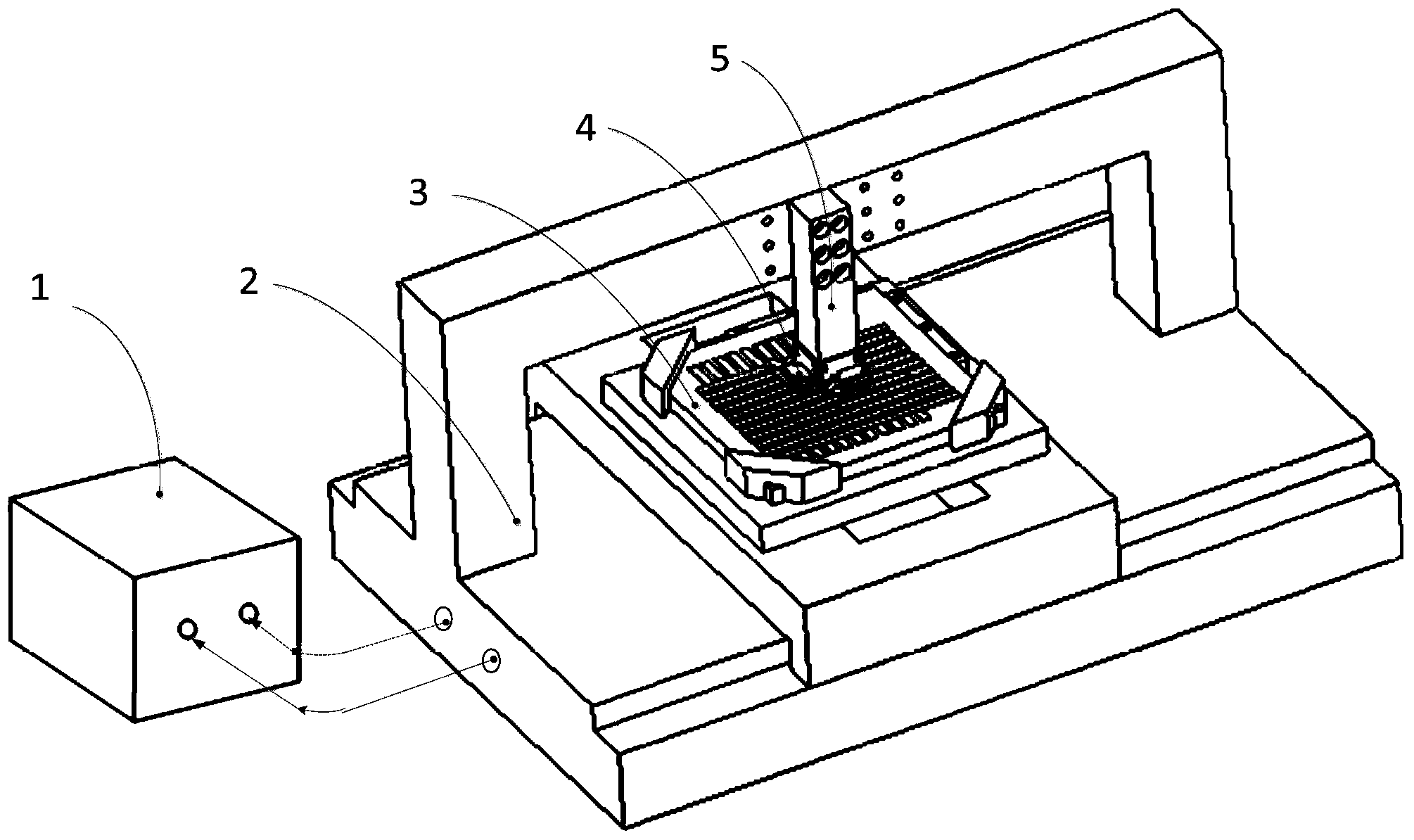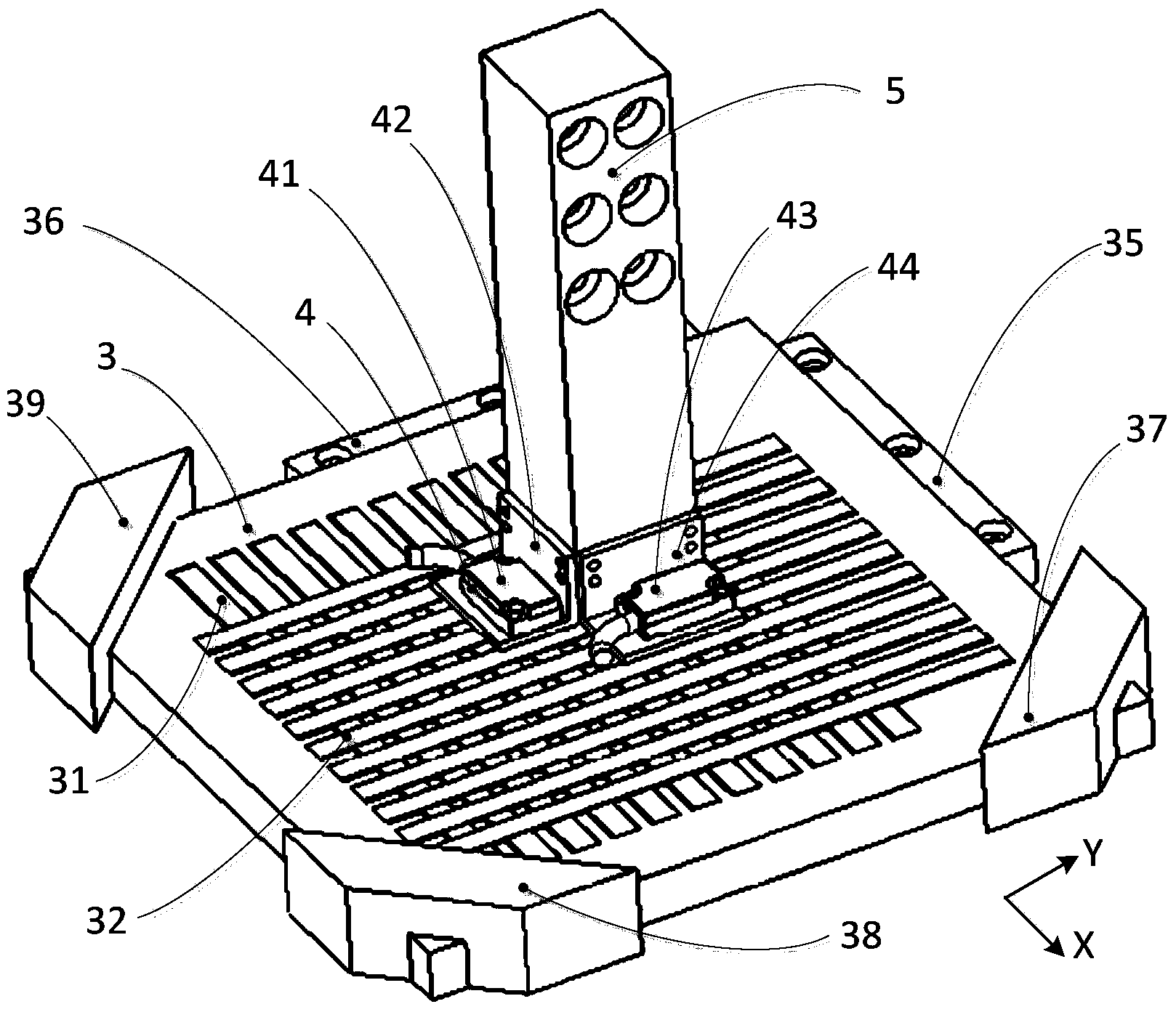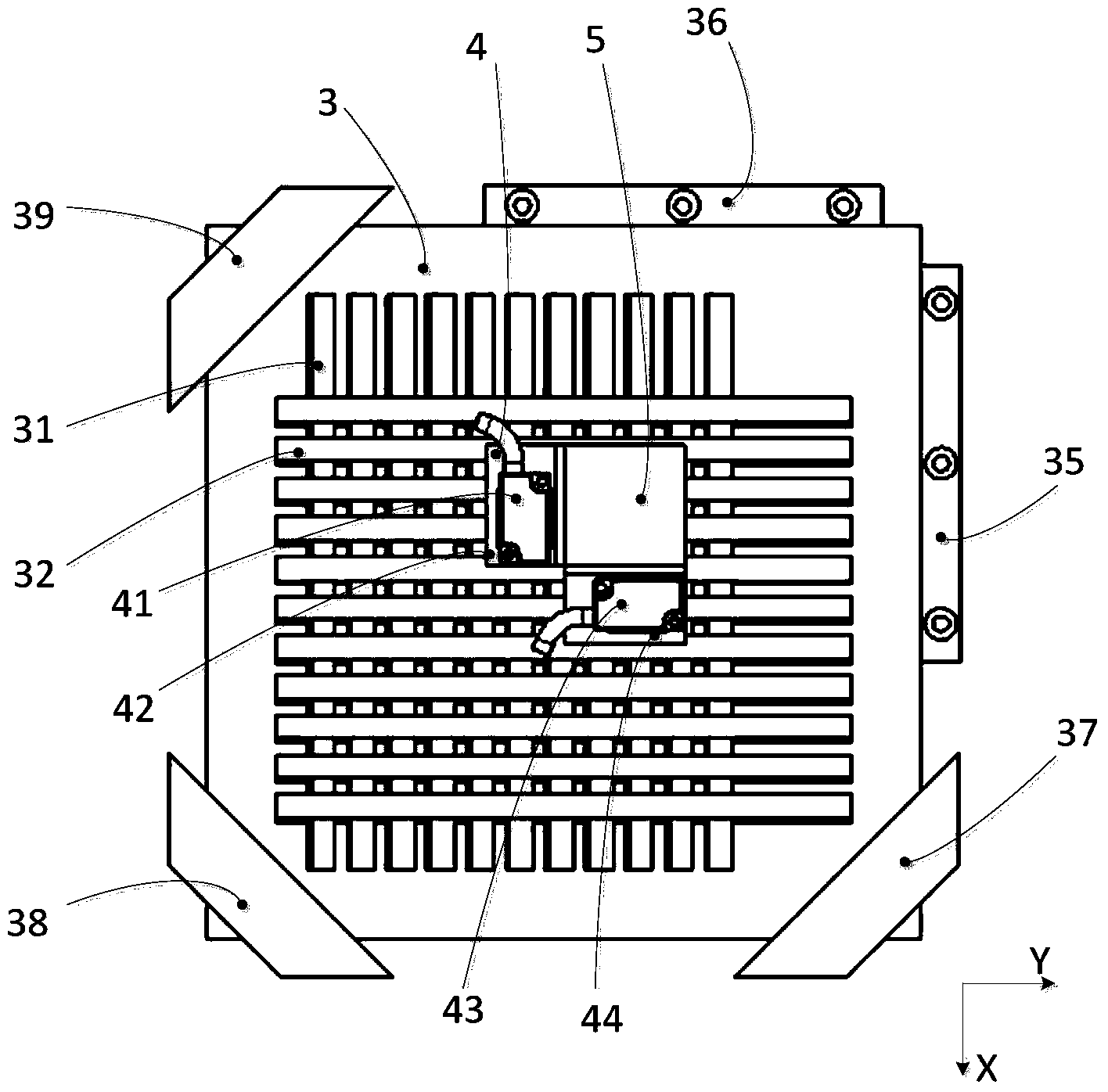Two-dimension self-calibration gauge point detection alignment system
A technology for aligning systems and marking points, applied in measuring devices, instruments, optical devices, etc., can solve the problems of long self-calibration process, high working environment requirements, low signal acquisition frequency, etc., to improve the self-calibration effect. , the effect of reducing deficiencies and low environmental sensitivity
- Summary
- Abstract
- Description
- Claims
- Application Information
AI Technical Summary
Problems solved by technology
Method used
Image
Examples
Embodiment Construction
[0022] The structure, principle and specific implementation of the present invention will be further described in detail below in conjunction with the accompanying drawings.
[0023] Please refer to figure 1 , figure 1 It is a schematic diagram of a two-dimensional self-calibration mark point detection and alignment system of the present invention. Such as figure 1 As shown, the two-dimensional self-calibration mark point detection and alignment system includes: a zero signal reader 1, a two-dimensional workbench 2, a grating ruler auxiliary calibration plate 3, a reading head detection part 4, and a measurement reference frame 5;
[0024] The zero signal reader 1 and the two-dimensional workbench 2 are connected to each other through signal lines; the grating ruler auxiliary calibration plate 3 includes: X direction channel 33, Y direction channel 34, marked with a zero mark point X-direction grating ruler 31, Y-direction grating ruler 32 marked with zero mark point, first...
PUM
 Login to View More
Login to View More Abstract
Description
Claims
Application Information
 Login to View More
Login to View More - R&D
- Intellectual Property
- Life Sciences
- Materials
- Tech Scout
- Unparalleled Data Quality
- Higher Quality Content
- 60% Fewer Hallucinations
Browse by: Latest US Patents, China's latest patents, Technical Efficacy Thesaurus, Application Domain, Technology Topic, Popular Technical Reports.
© 2025 PatSnap. All rights reserved.Legal|Privacy policy|Modern Slavery Act Transparency Statement|Sitemap|About US| Contact US: help@patsnap.com



